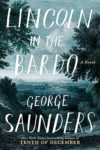I discovered recently that my book, which is available to libraries as an ebook through Overdrive, is now part of the collection at Oakland (CA) public library. This makes me so happy. I have been a patron of the OPL libraries for most of my adult life. Also, for reasons I don’t fully understand, it seems to be having a positive effect on sales.
So thank you, anonymous librarian who added me to the collection! Maybe I met you at a conference and don’t remember. Drop me a note if you see this so I can aim my gratitude to the right person.
I also love bringing my used books to the Bookmark Bookstore, run by Friends of the Oakland Public Library, because I know they will find good homes, AND that those sorting through them will recognize good stuff to add to the collection (not always a sure thing.) You can contact the Bookmark Bookstore at 510-444-0473 or visit them at www.fopl.org. Donations support library collections!
I first moved to Oakland when I was an UG at Bezerkeley, back when dinosaurs roamed the earth. I’ve lived there off and on, but always seem to return. I love Lake Merritt, and the amazing wildlife, human and animal, that hangs out there.
Did you know Lake Merritt is the oldest wildlife refuge in California (1869)? Amazing birds. And bonsai garden. And a sensory garden, And a Japanese garden. And a palm garden. And gondolas. And…geese.
So yes, I am familiar with the less savory attributes of geese, dear readers.









